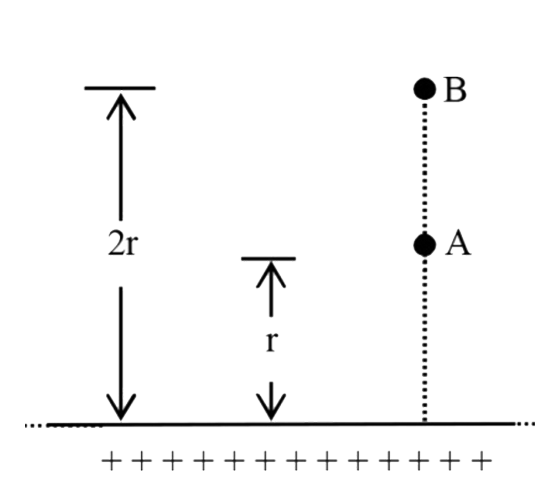In figure two points A and B are located in a region of electric field . The potential difference VB−VA is

Positive
Negative
Zero
None of these
Anwer (2)
VB<VA⇒VB−VA<0.
Similar Questions
Knowledge Check
The work done in carrying a charge of 5μC form a point A to a point B in an electric field is 10mJ. The potential difference (VB−VA) is then
A+2kVB−2kVC+200VD−200VThe work done in carrying an electron from point A to a point B in an electric is 10 MJ. The potential difference (VB−VA) is then
A+2kVB−2kVC+200VDNone of theseTwo capacitors C1 and C2 are connected in a circuit as shown in figure. The potential difference (VA−VB) is
 A8VB−8VC12VD12V
A8VB−8VC12VD12V
A charge q=+1μC is held at 0 between two points A and B such that AO=2mandBO=1m Calculate the value of potential differences (VA−VB). What will be the value of potential differences (VA−VB) if position of B is charged as shown in Fig ?

View SolutionDebroglie wavelength of proton accelerated by an electric field at a potential difference v is
View SolutionFigure shown three points A,B and C in a region of unifrom electric field →E. The line AB is perpendicular and BC is parallel to the field lines. Then which of the following holds good. Where VA,VB and VC represenet the electric potential at points A,B and C respectively

View SolutionPoint A is located 0.25 m away from a charge of −2.1×10−9C. Point B is located 0.50 m away from the charge. What is the electric potential difference V_(B)- V_(A) between these two points ?
View Solution15 joule of work has to be done against an existing electric field to take a charge of 0.01 C from A to B. Then the potential difference (VB−VA) is :-
View Solution


